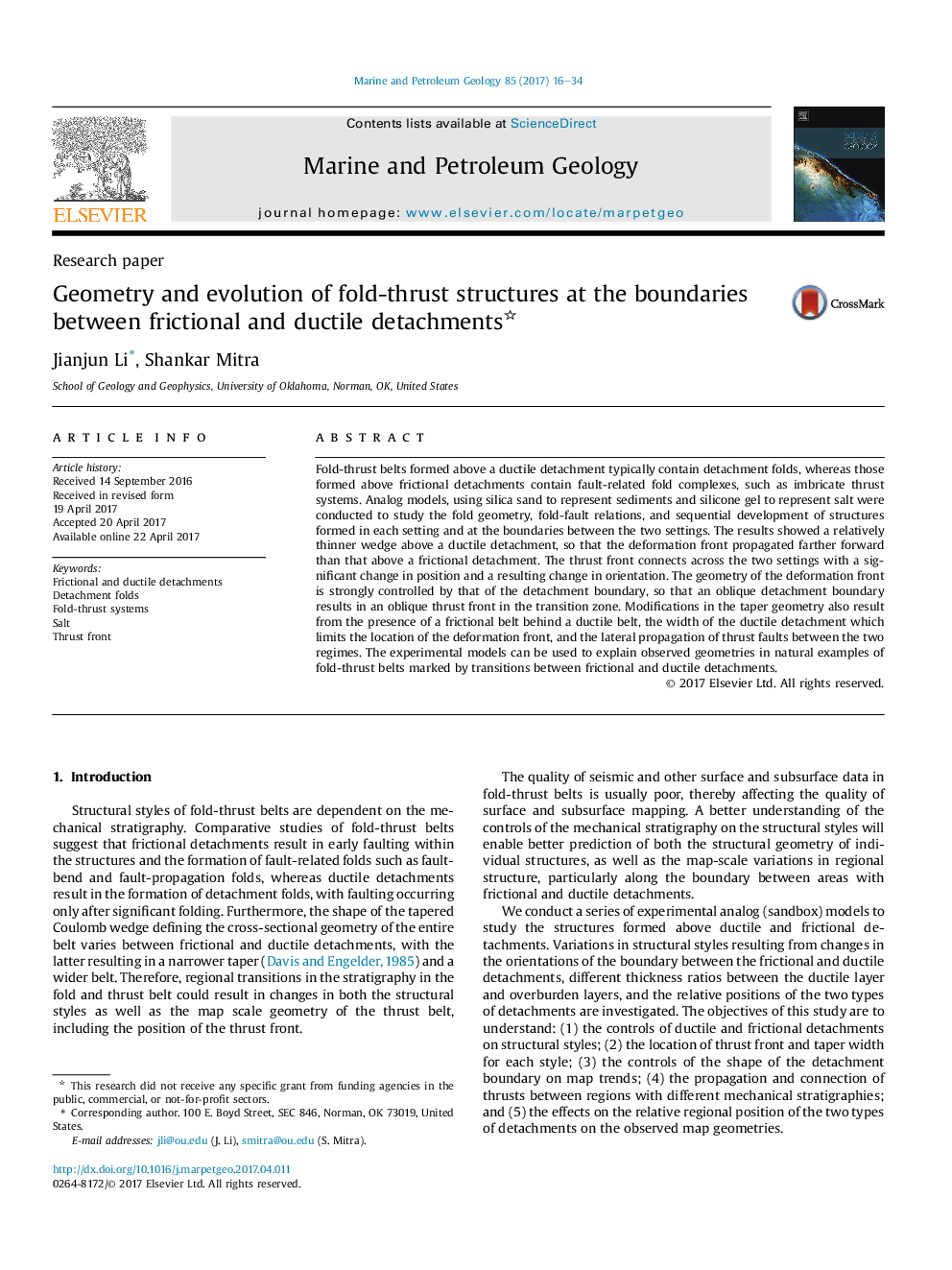| Article ID | Journal | Published Year | Pages | File Type |
|---|---|---|---|---|
| 5782073 | Marine and Petroleum Geology | 2017 | 19 Pages |
â¢Structural styles are controlled by the strength of the detachment surface.â¢The thrust front propagates farther and at higher rates for ductile detachments.â¢The fold-thrust map geometry is strongly controlled by the detachment boundary.â¢Lateral propagation of thrust faults influences wedge shape and thrust spacing.
Fold-thrust belts formed above a ductile detachment typically contain detachment folds, whereas those formed above frictional detachments contain fault-related fold complexes, such as imbricate thrust systems. Analog models, using silica sand to represent sediments and silicone gel to represent salt were conducted to study the fold geometry, fold-fault relations, and sequential development of structures formed in each setting and at the boundaries between the two settings. The results showed a relatively thinner wedge above a ductile detachment, so that the deformation front propagated farther forward than that above a frictional detachment. The thrust front connects across the two settings with a significant change in position and a resulting change in orientation. The geometry of the deformation front is strongly controlled by that of the detachment boundary, so that an oblique detachment boundary results in an oblique thrust front in the transition zone. Modifications in the taper geometry also result from the presence of a frictional belt behind a ductile belt, the width of the ductile detachment which limits the location of the deformation front, and the lateral propagation of thrust faults between the two regimes. The experimental models can be used to explain observed geometries in natural examples of fold-thrust belts marked by transitions between frictional and ductile detachments.
